Bolt Action Campaign The Western Desert
I have already covered the plastic kits of the Afrika Korps and 8th Army Infantry that came along with this campaign supplement for Bolt Action - Campaign the Western Desert. Now it is time for the book itself.
The name already gives it away, this book covers the first chapter between 1940 and 1942 of the Afrikafeldzug or North African Campaign. With 168 pages a rather big book, actually currently the one with the highest page count, pushing The Road to Berlin from his former throne at 148 pages. Warlord Games keeps the price at 19,99 GBP or 30 USD and offers as usual a direct exclusive miniature, in this case the very fitting Field Marshal Erwin Rommel. Next to the final cover, with Rommel himself, is the early cover with a British soldier carrying a Bren LMG. Nothing unusual, we already had different covers early among others for Duel in the Sun as well.
This supplement was written by Roger Gerrish and Mike Bradford. Roger already worked with Warlord Games as game editor for the Dr. Who game and wrote the Road to Berlin Book, and Mike, who's an published rules author (Partizan Press: Living on the Frontline: Winter of ‘79) is no stranger to wargames himself.
What is it about?
Whereas Duel in the Sun covered the whole Mediterranean fights, including the later first operations in Italy, The Western Desert focus on the fights in North Africa. It begins with the Invasion of Egypt by the Italians, goes on through Libya and ends with Operation Supercharge just before Operation Torch, which isn't part of the Western Desert Campaign by definition. The second and third chapters of the North African Campaign, Torch and Tunisia are covered along the later Invasion of Italy in the Duel in the Sun book.
So for those new to this part of the Second World War. War in Africa wasn't part of the plan for the Deutsches Reich. Hitler saw himself forced to get active there, after Mussolini and his army miscalculated the efforts of war around the Italian colonies in Northern Africa. Therefor the first chapter of the book, Operation Compass, only covers battles between the Italians and the British Commonwealth. The Aufklärungsstab Rommel, shortly after introduction renamed Deutsches Afrikakorps, starts its presence after landing in Libya and the Unternehmen Sonnenblume. Several battles along the Libyan-Egyptian border, over Tobruk and El Alamein, were fought until the tide irrevocably turned against the Italo-German forces in late 1942 in the second Battle for El Alamein and Outpost Snipe - both covered in the book. But the British didn't fight alone against the Axis, they reinforced the British Army with troops from all over the Commonwealth, including armed forces of governments in exile like the Greek of French.
First Impression
You might remember how impressed I was with The Road to Berlin due to its size. It's a heavy book, you really get something for your book, which is always a good beginning. While browsing through this book for the first time, I was irritated. Where are the new units? No Legends for Bolt Action in this book? While I was turning page by page, coming closer to the end, I noticed a new structure of the chapters. Instead of adding the units to the scenarios and mixing the new rules here and there in with the background, they have chapters and appendix of their own. A much, much better solution and so much more comfortable for building your armies outside of the campaign play.
These books already have a high appeal, with the layout and dioramas on every page. But this is the western desert, they have a much richer resource to collect from. First of all, the Perry twins have a huge collection of their own range and already presented it multiple times in battle reports. As these books need quite some time for print and pre-production, most of the miniatures you will see in here aren't from Warlord Games own range, the new plastic kits or upcoming pre-orders, they are from the superb Perry Miniatures range of German, British, Italian and French soldiers. To round this up, they were supported by some very talented painters and terrain builders, like Warlord's own Darek Wyrozebski or Andy Singleton of Volley Fire Painting, who I had the honour to meet at this year's Salute and see their impressive Mediterranean World War 2 display. So just for the eye, this book is quite an appealing piece of work. Unfortunately there are a few errors (continuity errors with the designation of vehicles along with the usual German hick-ups) and typos.
The time period it covers, is already mentioned above, and with that, it covers new units for the British and Commonwealth, Italy and Germany. We receive rules for the AEC 4x4 ACV Dorchester, several Aufklärungsfahrzeuge for the Afrikakorps, updated rules for the Kradschützen (now better mixture with the side cars) and of course the matching theatre selectors. And I cannot praise this enough, the new structure of the chapters makes it so much more pleasant to read the rules. The theatre selectors are heavy on the mobilized troops, the British Armoured Brigade during Compass and Crusader, and even new national characteristics for the Commonwealths armies of Australia, South Africa, New Zealand (incl. Maori!) and British India. The Italian theatre selectors are so extensively introduced, that they are not just the usual selectors, but more a new army list similar to the one of the Free French included in this book. Both lists give you the option to replace those from the first edition supplements Italy and the Axis and France and the Allies. And as if that wouldn't be impressive enough, the book covers another 24 pages on Special Forces of the Western Desert campaign, of course, you know the Long Range Desert Group (LRDG), but were you aware of the Italian Compagnia Sahariana or Camionesti or the German Kampfgruppe Hecker and that the Brandenburger were active in North Africa?
And for the Heroes of the Western Desert, they included Flying Officer C.F.C. Lee, better known as Christopher Lee (yes, that Christopher Lee, CBE, Count Dracula, Saruman, and many, many more impressive activities), as well as two further British Heroes. The Italian Tennente A. M. Scalise, a Semovente tank commander, and only a single German, Günter Halm, anti-tank gunner with an PaK 36(r). For whatever reason, Rommel, being the special miniature to this book, is not covered. But the rules for him were released shortly after the release of the book on the Warlord Games website.
A total number of 19 Scenarios spread across 6 chapters and an additional raid chapter are covered in this book;
- Scenario 1: Frontier Battle (Operation Compass: The Fighting Begins)
- Scenario 2: Fort Nibeiwa, 9 December 1940 (Operation Compass: The Fighting Begins)
- Scenario 3: The Battle for Bardia, 4 January 1941 (Operation Compass: The Fighting Begins)
- Scenario 4: Tank Clash at Mechili, 24 January 1941 (Operation Compass: The Fighting Begins)
- Scenario 5: Fox killed in the Open, 5 February 1941 (Operation Compass: The Fighting Begins)
- Scenario 6: Mersa Brega, 31 March 1941 (Operation Sonnenblume)
- Scenario 7: Ras El Madauur, 13 April 1941 (Operation Sonnenblume)
- Scenario 8: Hellfire Pass, 15 June 1941 (Operation Brevity and Battleaxe)
- Scenario 9: Bir El Gubi, 19 November 1941 (Operation Crusader)
- Scenario 10: Gabr Saleh, 19 November 1941 (Operation Crusader)
- Scenario 11: Point 175, 29 November 1941 (Operation Crusader)
- Scenario 12: The Cauldron, 1 June 1942 (Gazala: Rommel's Greatest Victory)
- Scenario 13: Bir Hakeim, 27 May 1942 (Gazala: Rommel's Greatest Victory)
- Scenario 14: Bir-El Harmat 2 June 1942 (Gazala: Rommel's Greatest Victory)
- Scenario 15: Alam Halfa, 31 August 1942 (El Alamein: The End of the Beginning)
- Scenario 16: Outpost Snipe, 27 October 1942 (El Alamein: The End of the Beginning)
- Scenario 17: The Charge of the 9th Armoured, Tel El Aqqaqir, 2 November 1942 (El Alamein: The End of the Beginning)
- Scenario 18: Dawn Raid (Raid Scenarios)
- Scenario 19: The Via Balbia Raid, 27 May 1942 (Raid Scenarios)
And of course, a campaign supplement with such harsh and signature battle conditions covers the special rules for their use in Bolt Action. The special rules were covered in (near) identical way in among other supplements Duel in the Sun, but are more extended and partially adapted to the 2nd edition rule sets. They cover rules for the desert climate, weather and environmental effects as well as rules for the use of roads and tracks compared to the wild desert ground. The dug-in rules were extended, you now have the option to go hull down with your tanks, as well as the uses of and for minefields were extended.
How does Western Desert play?
When I reviewed Duel in the Sun, I went as far as to call it one of the most, if not the most, versatile campaign supplement there is for Bolt Action. Of course, you're missing the air borne landings of Crete in here and the late war action of the invasion of Italy. But with the appendix on the special forces and the raid scenarios, you have a lot of different options for early and mid-war Bolt Action. For my taste, Bolt Action is the most interesting if not played with too big of an army and not with that heavy gear.
You can play the skirmish battles of the reconnaissance patrols between armoured cars, sieges over desert fortresses and cities, with alternating roles as defender and attacker (which is a rare thing), larger battles like Alamein or the raids of airfields and supply lines. There are no heavy tanks like Tigers in the theatre selectors, as they were deployed in November 1942 towards Tunisia, which is not part of this campaign. So the heaviest tanks around for these games are medium battle tanks like Shermans and Panzer III or IV. Therefore even the tank battles are nothing like Kursk, more a couple of armoured cars alongside actual early to mid-war light and medium tanks.
The armies are due to the strong mobilisation rather mobile. The battlefields can be everything you like, from very open to a lot of dunes and ruins. The light and medium equipment is forgiving and with the special forces you have access to veteran units early on. The book although covers some great inspiration for rare themed armies, like the Italian special forces or Free French.
As for the scenarios, these are meant for narrative campaign play, not for competitive tournament play. Depending on which games you play the attacker or defender gains a tactical advantage, additional points or such. These switch sides like the situation in Africa fluctuated, in some the Axis will have the upper hand, in others the Allies.
What's next?
You can already pre-order Battle of France, as it was announced for November, focussing on the early years of war and giving more detail to the Germany Strikes! content. Recently two more books popped up on the release schedule, but these have to be taken with a pinch of salt. Fortress Budapest for March 2019, covering the siege of Budapest by the Soviet Union, and even later in 2019 a Korea supplement. Why Korea? This would be the first step out of World War 2 by Bolt Action, but it makes sense, a lot of the gear that Warlord Games offers for the US American range was used beyond WW2 in the Korean War (1950-53) like Shermans, Pershings and Hellcats. But this opens up another question, you can't fight a war without an antagonist, so will they sculpt these ranges as well, will / have they acquire a new company or will they team up with somebody like in the past with Empress?
Conclusion
The Western Desert is the 8th book of the second edition, and as the first one was the re-vamped Armies of Germany, it is the 7th campaign book. We already had a brief look forward, with the Battle of France as the next campaign supplement. And it is going to be interesting where these supplements will go and what they will cover in the future. The books becoming bigger is a good thing. As I for myself prefer the idea of Bolt Action as a casual game, used more for narrative campaigns on the weekends instead of competitive tournaments, like the way these books are made. A lot of inspirational content, broad base to start from and not too serious. You can fill in some of the gaps, extend what you find in the books or combine parts from different books. It has a rich amount to choose from.
The book is well made, very appealing in terms of layout and especially with the new order of the scenarios, units etc. (and I really hope they keep that format for the upcoming books) it has improved even further. Editorial staff would be beneficial, ideally somebody who speaks at least German, would improve the quality of the final product even further. It is not unbearable, it would just be more appropriate for the otherwise high standard of the book(s).
The North Africa campaign is one of my favourites, so this book had a good point to start from. Due to its size, it covers the three years in a suitable depth, including new units, proper special rules for the individual warfare in the desert, without making it too complex. In combination with a few resource books you are set for a new adventure. There are the obligatory Osprey books on Afrikakorps (ELI #34) or Desert Rats (WAR #160), the different campaigns or Special Forces like the LRDG, and beyond that are some interesting publications on Commonwealth's armies of South Africa or New Zealand.
Bolt Action is a brand of Warlord Games.
The reviewed product item was provided by the manufacturer.
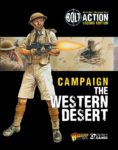
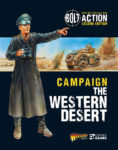
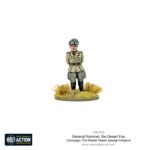
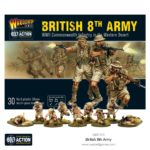
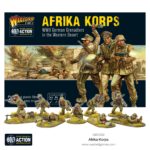
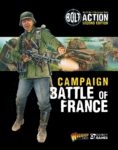
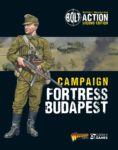
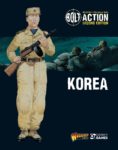












Leave a Reply